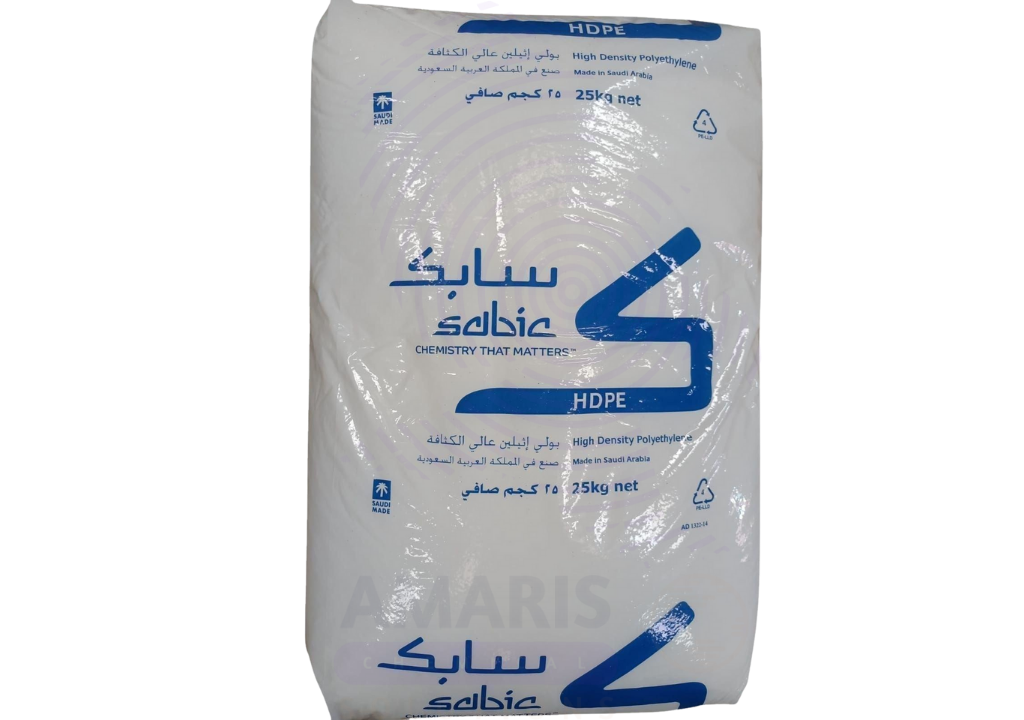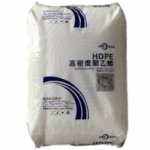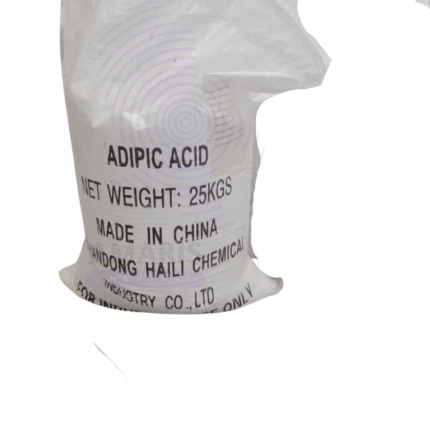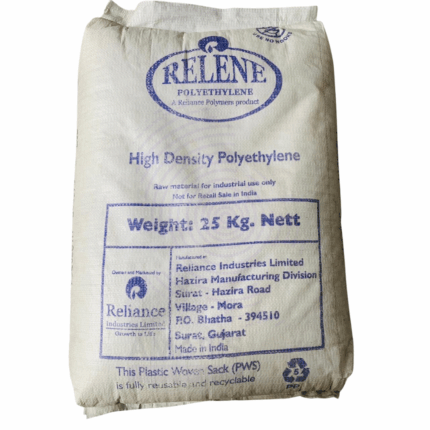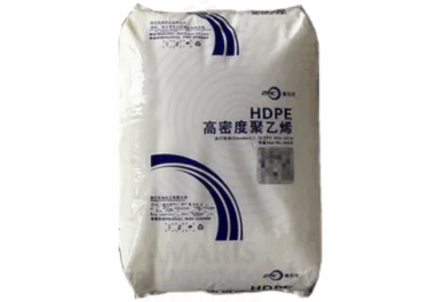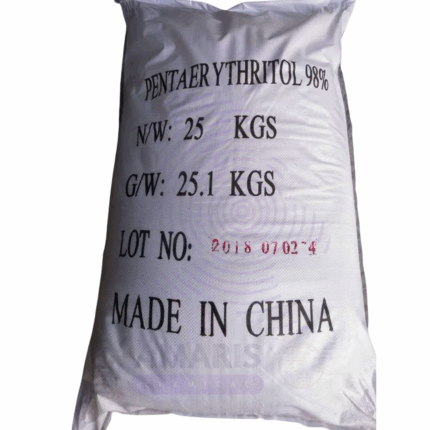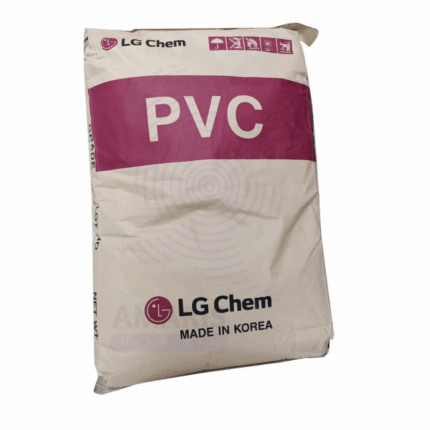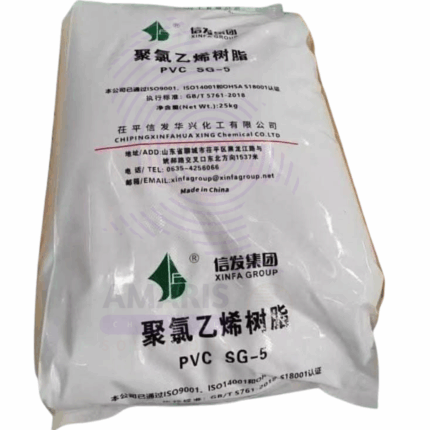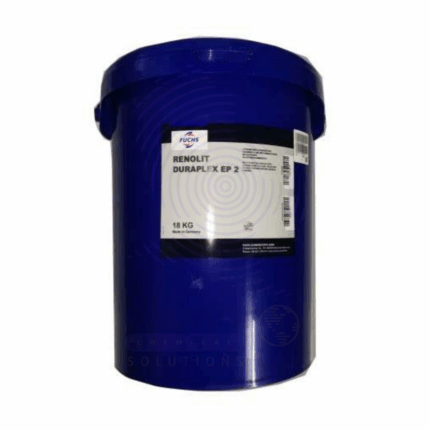Back to products
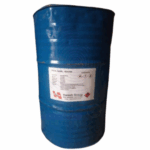

Hexane
$ 2.75 Original price was: $ 2.75.$ 2.66Current price is: $ 2.66.
HDPE pipe HS CRP 100- PE 100 (black water pipe)
Whatsapp Order
HDPE pipe HS CRP 100- PE 100 (black water pipe) is a high-density polyethylene (HDPE) pipe grade resin specially designed for the manufacture of high-performance pressure pipes. This grade corresponds to PE 100 classification, meaning it has enhanced strength and durability characteristics suitable for high-pressure applications. The resin exhibits excellent resistance to slow crack growth, outstanding chemical resistance, and superior impact strength even at low temperatures. HDPE PE 100 pipe is widely used in demanding infrastructure, water supply, gas distribution, and industrial piping systems due to its long service life, flexibility, and corrosion resistance.
Description
Table of Contents
Toggle
HDPE pipe HS CRP 100- PE 100 (black water pipe)
Primary Uses
- Water Supply and Distribution
- Manufacturing of potable water pipelines with excellent resistance to internal pressure and external loads.
- Used in drinking water distribution networks due to its non-toxic and corrosion-free properties.
- Employed in irrigation systems for agriculture requiring durable and flexible piping.
- Gas Distribution
- Fabrication of natural gas and LPG distribution pipelines meeting stringent safety and pressure requirements.
- Suitable for underground gas piping systems due to its leak-proof and corrosion-resistant nature.
- Sewage and Wastewater Systems
- Used for sewage and drainage piping where chemical resistance and impact toughness are essential.
- Applied in stormwater drainage systems to withstand harsh environmental conditions.
- Industrial Applications
- Employed in chemical transport pipelines resistant to a wide range of corrosive fluids.
- Suitable for industrial process piping in sectors like mining, manufacturing, and food processing.
- Infrastructure and Construction
- Utilized in district heating and cooling systems requiring high pressure and temperature resistance.
- Used in cable ducting and conduit applications protecting electrical and communication cables.
Secondary Uses
- Marine and Offshore
- Used for submarine pipelines and underwater cable protection requiring resistance to saltwater corrosion.
- Renewable Energy
- Applied in geothermal and solar thermal systems piping where chemical and temperature resistance is needed.
- Compressed Air Systems
- Fabrication of compressed air piping in industrial settings requiring pressure resistance and durability.
KEY PRODUCT FEATURES
1. Basic Identification Attributes
- Chemical Name (IUPAC): Polyethylene, high-density (HDPE)
- Common/Trade Name: HDPE Pipe HS CRP 100-PE 100
- CAS Number: 9002-88-4
- HS Code: 3901.20.00
- Polymer Type: High-density polyethylene, PE 100 pipe grade
- Synonyms: PE 100 HDPE Pipe Resin; High Strength HDPE for pipes
2. Physical & Chemical Properties
- Physical State: Pellet resin for pipe extrusion
- Color & Odor: Natural/translucent or black (carbon black compounded); odorless
- Density: ~0.955 g/cm³ (carbon black grade)
- Melt Flow Index (MFI): Approx. 0.25–0.40 g/10 min (depending on specific grade)
- Melting Point: Approx. 130°C
- Tensile Strength: Very high, typically >30 MPa
- Environmental Stress Crack Resistance: Excellent, suitable for long-term pressure use
- Chemical Resistance: Resistant to acids, bases, solvents, and hydrocarbons
- Thermal Stability: Suitable for continuous use at temperatures up to 60°C (PE 100)
3. Safety & Hazard Attributes
- GHS Classification: Not hazardous
- Toxicity: Non-toxic, suitable for potable water contact (subject to certification)
- Handling: Non-irritant under normal conditions
4. Storage & Handling Attributes
- Container Type: Supplied in bags or bulk containers
- Storage Conditions: Store in cool, dry areas protected from UV radiation
- Shelf Life: Up to 2 years under proper storage
- Handling Notes: Avoid moisture and contamination; use gloves and dust masks if needed
5. Regulatory & Compliance Attributes
- Compliant with ISO 4427, ASTM F714, and EN 12201 standards for PE pipe materials
- Certified for potable water applications by NSF/ANSI 61, WRAS, or equivalent (subject to certification)
- REACH and RoHS compliant
6. Environmental & Health Impact
- Biodegradability: Non-biodegradable but recyclable
- Recycling: Accepted in PE pipe recycling streams
- Ecotoxicity: Low; inert polymer
- Carcinogenicity/Mutagenicity: Not classified
SAFETY HANDLING PRECAUTIONS
Safety Handling Precautions
- PPE Required: Gloves, safety goggles, and dust mask during handling of resin pellets
- Handling Guidelines: Use in well-ventilated areas; avoid inhalation of dust
- Hygiene Practices: Wash hands thoroughly after handling
First Aid Measures
- Inhalation: Remove to fresh air if irritation occurs
- Skin Contact: Wash skin with soap and water
- Eye Contact: Flush eyes with plenty of water for at least 15 minutes; seek medical attention if irritation persists
- Ingestion: Not expected to be harmful; seek medical advice if large amounts ingested
Firefighting Measures
- Fire Hazards: Combustible polymer; produces dense smoke and toxic gases (carbon monoxide, carbon dioxide) on burning
- Extinguishing Media: Water spray, foam, dry chemical, or CO₂
- Combustion Products: Carbon oxides, hydrocarbons
- Firefighter PPE: Use self-contained breathing apparatus and full protective clothing
Related products
Adipic Acid
$ 3.20
HDPE Blow HDB5502
HDPE Blow HDB5502 is a high-density polyethylene resin specifically formulated for blow molding applications. It is a semi-crystalline thermoplastic polymer characterized by excellent strength-to-density ratio, high chemical resistance, and superior processability in blow molding equipment. This grade exhibits high stiffness, good environmental stress crack resistance (ESCR), and excellent impact resistance, making it ideal for manufacturing durable hollow containers and complex-shaped products. The resin is supplied as granular pellets with consistent melt flow and homogeneity, optimized for efficient molding cycles and high throughput.
HDPE Injection HMA035/3255
HDPE Injection HMA035/3255 is a high-density polyethylene resin specially formulated for injection molding processes. This grade exhibits excellent flow characteristics with moderate melt flow index optimized for producing precise, high-strength molded parts with superior surface finish. It combines good impact resistance, stiffness, and chemical resistance with excellent dimensional stability. The resin ensures reliable processing performance across a broad temperature range and is suitable for complex, detailed, or large injection-molded components. It is supplied as uniform granules designed for smooth melting and consistent molding cycles.
Pentaerythritol
Pentaerythritol is a high-purity, crystalline polyol used extensively in the production of alkyd resins, synthetic lubricants, explosives, and plasticizers. Its multifunctional alcohol structure provides excellent stability, high melting point, and good compatibility with various chemicals. Pentaerythritol 98% is valued for its role as a building block in chemical syntheses, offering enhanced durability, flexibility, and resistance in end products.
Polyvinyl Chloride Resin 702
Polyvinyl Chloride Resin 702 is a high molecular weight, suspension-grade polyvinyl chloride resin with a K-value around 70–72. It is specifically formulated for use in soft and flexible PVC products due to its excellent plasticizer absorption and high mechanical strength. Its superior elongation, thermal stability, and processability make it highly suitable for calendaring, extrusion, injection molding, and dip molding operations. PVC Resin 702 is extensively used across the cable, synthetic leather, film, and footwear industries.
PVC K67
PVC K67 is a general-purpose polyvinyl chloride resin with a K-value of 67, indicating a medium molecular weight suitable for rigid applications. It is a white, free-flowing powder commonly used in the production of rigid PVC products such as pipes, fittings, profiles, and sheets. PVC K67 offers excellent processability, good mechanical strength, chemical resistance, and dimensional stability, making it ideal for a wide range of industrial and construction applications.
RAP 55D
RAP 55D is a grade of impact copolymer polypropylene (PP) resin designed primarily for injection molding applications. It features a balance of rigidity and impact strength, making it ideal for manufacturing durable plastic parts. This resin offers excellent processability, dimensional stability, and resistance to chemicals and moisture. RAP 55D is used across automotive, household, industrial, and packaging sectors due to its robust mechanical properties and versatility.
Renolit Duraplex EP 2, 3
Renolit Duraplex EP 2 and EP 3 are high-performance extreme pressure (EP) lithium-based grease lubricants designed for heavy-duty industrial and automotive applications. These greases provide excellent mechanical stability, water resistance, and protection against wear and corrosion under high load and temperature conditions. Formulated with high-quality base oils and additives, Renolit Duraplex EP greases ensure long service intervals and reliable operation of bearings, joints, and other moving components.


 Preservatives(food)
Preservatives(food) Flavor Enhancers
Flavor Enhancers Acidulants
Acidulants Sweeteners
Sweeteners Antioxidants
Antioxidants Colorants(food)
Colorants(food) Nutraceutical Ingredients (food)
Nutraceutical Ingredients (food) Nutrient Supplements
Nutrient Supplements Emulsifiers
Emulsifiers
 Collectors
Collectors Dust Suppressants
Dust Suppressants Explosives and Blasting Agents
Explosives and Blasting Agents Flocculants and Coagulants
Flocculants and Coagulants Frothers
Frothers Leaching Agents
Leaching Agents pH Modifiers
pH Modifiers Precious Metal Extraction Agents
Precious Metal Extraction Agents
 Antioxidants(plastic)
Antioxidants(plastic) Colorants (Pigments, Dyes)
Colorants (Pigments, Dyes) Fillers and Reinforcements
Fillers and Reinforcements Flame Retardants
Flame Retardants Monomers
Monomers Plasticizers
Plasticizers Polymerization Initiators
Polymerization Initiators Stabilizers (UV, Heat)
Stabilizers (UV, Heat)
 Antifoaming Agents
Antifoaming Agents Chelating Agents
Chelating Agents Coagulants and Flocculants
Coagulants and Flocculants Corrosion Inhibitors
Corrosion Inhibitors Disinfectants and Biocides
Disinfectants and Biocides Oxidizing Agents
Oxidizing Agents pH Adjusters
pH Adjusters Scale Inhibitors( water)
Scale Inhibitors( water)
 Antioxidants(cosmetic)
Antioxidants(cosmetic) Emollients
Emollients Fragrances and Essential Oils
Fragrances and Essential Oils Humectants
Humectants Preservatives
Preservatives Surfactants(cosmetic)
Surfactants(cosmetic) Thickeners
Thickeners UV Filters
UV Filters
 Fertilizers
Fertilizers Soil Conditioners
Soil Conditioners Plant Growth Regulators
Plant Growth Regulators Animal Feed Additives
Animal Feed Additives Biostimulants
Biostimulants Pesticides (Herbicides, Insecticides, Fungicides)
Pesticides (Herbicides, Insecticides, Fungicides)
 Active Pharmaceutical Ingredients (APIs)
Active Pharmaceutical Ingredients (APIs) Excipients
Excipients Solvents(pharmaceutical)
Solvents(pharmaceutical) Antibiotics
Antibiotics Antiseptics and Disinfectants
Antiseptics and Disinfectants Vaccine Adjuvants
Vaccine Adjuvants Nutraceutical Ingredients (pharmaceutical)
Nutraceutical Ingredients (pharmaceutical) Analgesics & Antipyretics
Analgesics & Antipyretics
 Analytical Reagents
Analytical Reagents Solvents(lab)
Solvents(lab) Chromatography Chemicals
Chromatography Chemicals Spectroscopy Reagents
Spectroscopy Reagents microbiology-and-cell-culture-reagents
microbiology-and-cell-culture-reagents Molecular Biology Reagents
Molecular Biology Reagents Biochemical Reagents
Biochemical Reagents Inorganic and Organic Standards
Inorganic and Organic Standards Laboratory Safety Chemicals
Laboratory Safety Chemicals Specialty Laboratory Chemicals(Special Laboratory Equipment)
Specialty Laboratory Chemicals(Special Laboratory Equipment)
 Demulsifiers
Demulsifiers Hydraulic Fracturing Fluids
Hydraulic Fracturing Fluids Scale Inhibitors(oil)
Scale Inhibitors(oil) Surfactants(oil)
Surfactants(oil) Drilling Fluids
Drilling Fluids
 Dyes and Pigments
Dyes and Pigments Bleaching Agents
Bleaching Agents Softening Agents
Softening Agents Finishing Agents
Finishing Agents Antistatic Agents
Antistatic Agents
 Admixtures
Admixtures Waterproofing Agents
Waterproofing Agents Sealants and Adhesives
Sealants and Adhesives Curing Compounds
Curing Compounds Concrete Repair Chemicals
Concrete Repair Chemicals Anti-Corrosion Coatings
Anti-Corrosion Coatings
 Surfactants(cleaning)
Surfactants(cleaning) Builders
Builders Enzymes
Enzymes Solvents (Cleaning)
Solvents (Cleaning) Fragrances
Fragrances
 Electronic Chemicals
Electronic Chemicals Catalysts
Catalysts Lubricants
Lubricants Photographic Chemicals
Photographic Chemicals Refrigerants
Refrigerants Automotive chemicals
Automotive chemicals Pyrotechnic Chemicals
Pyrotechnic Chemicals
 Biodegradable Surfactants
Biodegradable Surfactants Bio-based Solvents
Bio-based Solvents Renewable Polymers
Renewable Polymers Carbon Capture Chemicals
Carbon Capture Chemicals Wastewater Treatment Chemicals
Wastewater Treatment Chemicals
 Pigments
Pigments Solvents(paint)
Solvents(paint) Specialty Coatings
Specialty Coatings Binders/Resins
Binders/Resins Additives
Additives Driers
Driers Anti-Corrosion Agents
Anti-Corrosion Agents Functional Coatings
Functional Coatings Application-Specific Coatings
Application-Specific Coatings
 Fresh Herbs
Fresh Herbs Ground Spices
Ground Spices Whole Spices
Whole Spices Spice Blends
Spice Blends Dried Herbs
Dried Herbs
 Leavening Agents
Leavening Agents Dough Conditioners
Dough Conditioners Flour Treatments
Flour Treatments Fat Replacers
Fat Replacers Decoratives
Decoratives Preservatives(baking)
Preservatives(baking)
 Plasticizers & Softeners
Plasticizers & Softeners Reinforcing Agents
Reinforcing Agents Adhesion Promoters
Adhesion Promoters Vulcanizing Agents
Vulcanizing Agents Antidegradants
Antidegradants Blowing Agents
Blowing Agents Fillers & Extenders
Fillers & Extenders Accelerators & Retarders
Accelerators & Retarders